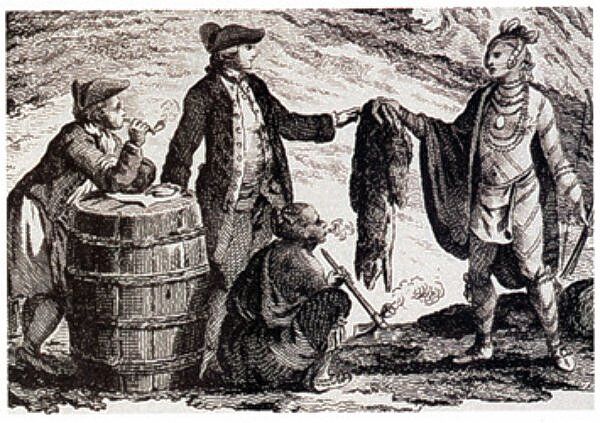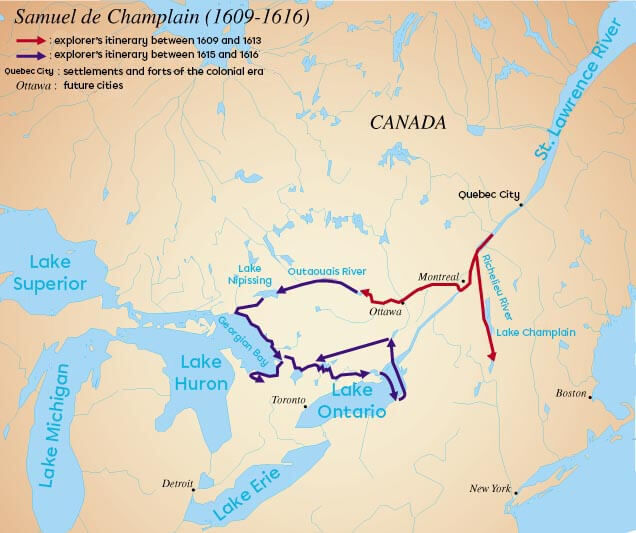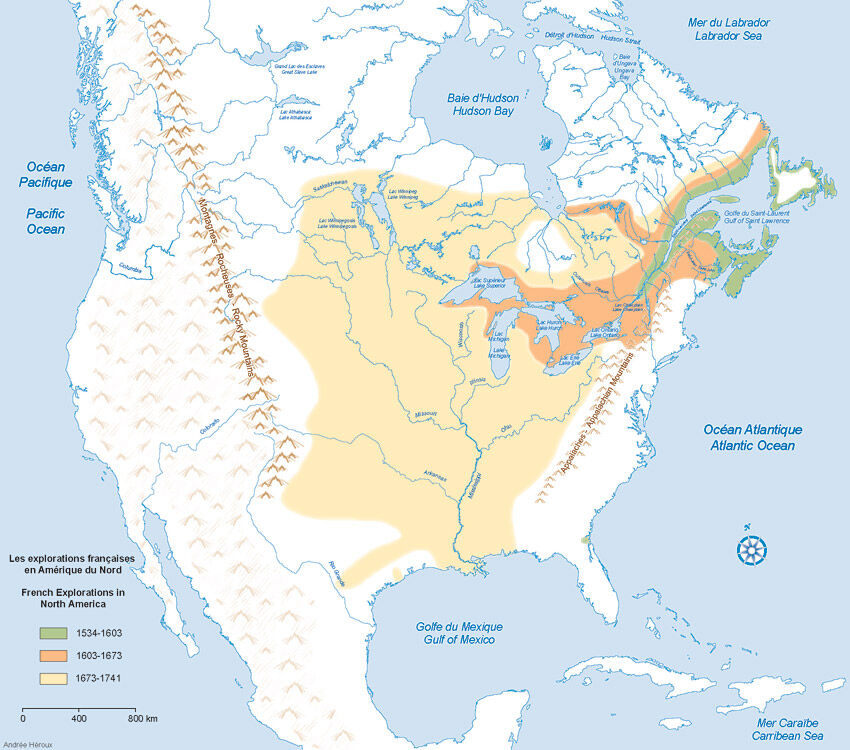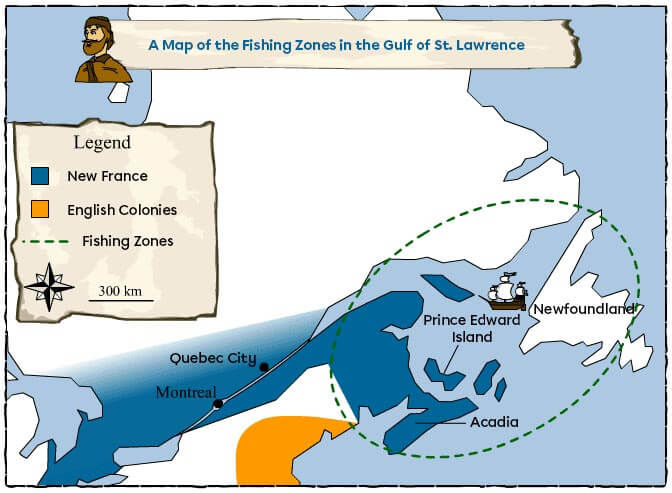The first contact between Europeans and the Indigenous peoples quickly led to the creation of a system of exchange for fur trade, as furs were highly sought after in Europe. This form of commerce would remain most important in New France throughout the entire duration of the French Regime.
Mercantilism was an economic theory of the 16th and 17th centuries whereby a State’s power could be measured by the quantity of precious metals, such as gold and silver, it possessed as well as its capacity to exploit its colonies’ resources.
In line with the economic theory of mercantilism, in which the aim is to accumulate precious metals, France also procured furs from its colony. These furs were transformed into felt hats, which were then traded with European countries for precious metals, helping the mother country grow richer, at the expense of its colony.
Indigenous peoples were essential to the fur trade. Unlike the French, they had excellent knowledge of the land and its resources.
From the early 1600s, the French made an effort to maintain good relationships with the Indigenous peoples by forming alliances. These allowed the French and the Indigenous peoples to barter: the French gave the Indigenous peoples products made in France in exchange for beaver furs.
Fruit, gun powder, blankets, tools, clothes, lighters, sewing needles, alcohol, pots, etc.
Indigenous peoples were tasked with hunting animals for their fur or procuring furs from more remote nations to exchange with the French. These exchanges happened at trading posts. Trading posts were generally built near water ways, which were the main means of transportation at the time. The furs were taken to the Saint Lawrence Valley before French traders sent them on to France to be made into hats, etc.

Exchange Between Indigenous Peoples and Europeans
In the early 17th century, the King of France sent Samuel de Champlain to explore the territory on his behalf. Champlain headed to the south and the west of the St Lawrence River.
During these explorations, Champlain forged alliances with the different Indigenous nations he met, which allowed the colonies to build a fur trading network, including more groups into the trade.

Samuel de Champlain’s Exploration of the Territory, 1609-1616
From the moment first permanent settlements were built until the end of the colony, it was the fur trade that drove the French to continue to explore the territory, particularly in the south and the west. The huge territory explored defined the borders of New France, although there were few people living there.

Map Showing the French Exploration of North America from 1534 to 1741
Although the fur trade was the main economic activity in New France, fishing was also very popular.

A Map of the Fishing Zones in the Gulf of Saint Lawrence
The fish caught were sent to France to be sold, but fishermen chose not to settle in the colony. Much like the fur trade, fishing did not really contribute to the colonization of New France.